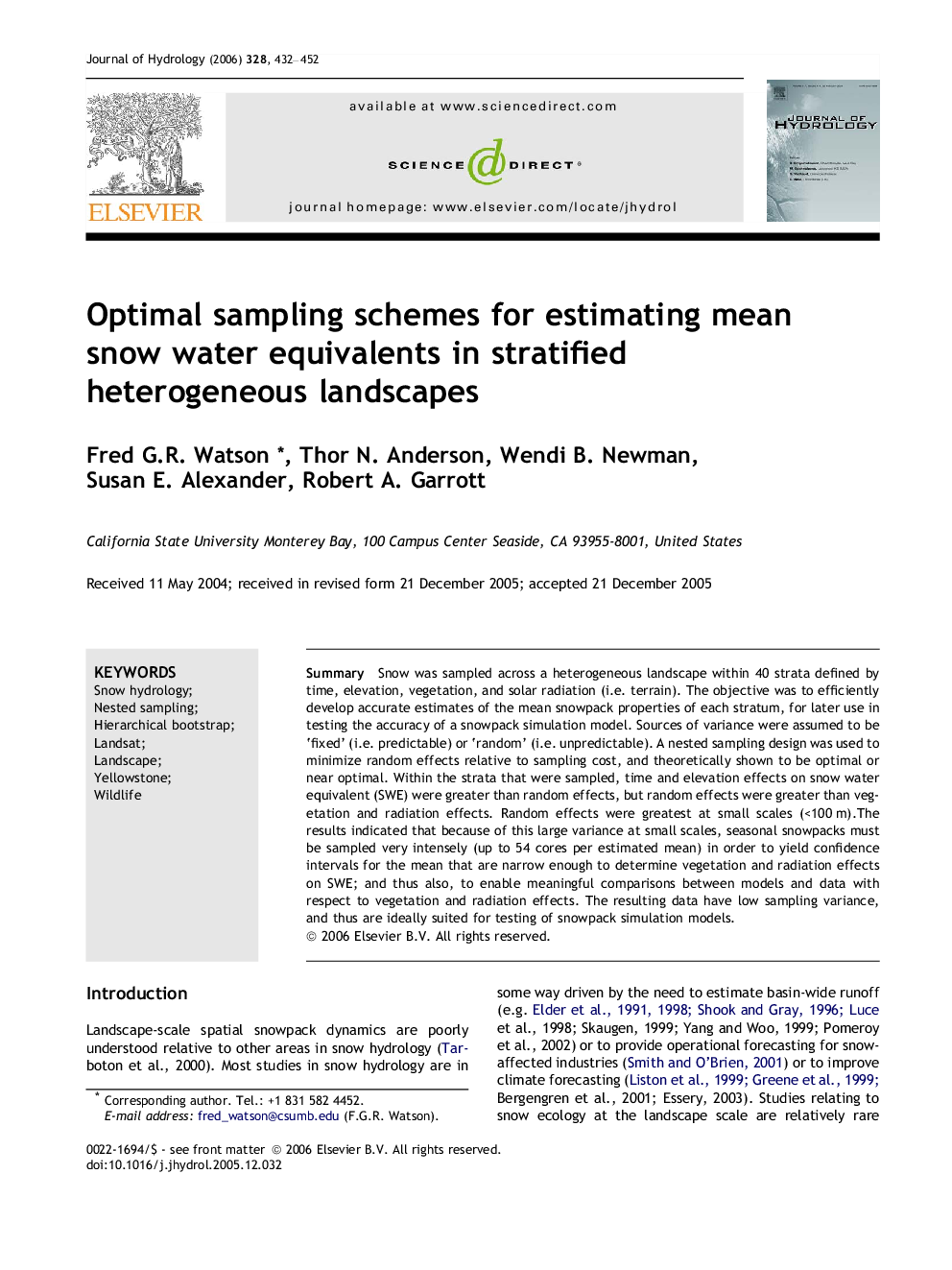| Article ID | Journal | Published Year | Pages | File Type |
|---|---|---|---|---|
| 4580582 | Journal of Hydrology | 2006 | 21 Pages |
SummarySnow was sampled across a heterogeneous landscape within 40 strata defined by time, elevation, vegetation, and solar radiation (i.e. terrain). The objective was to efficiently develop accurate estimates of the mean snowpack properties of each stratum, for later use in testing the accuracy of a snowpack simulation model. Sources of variance were assumed to be ‘fixed’ (i.e. predictable) or ‘random’ (i.e. unpredictable). A nested sampling design was used to minimize random effects relative to sampling cost, and theoretically shown to be optimal or near optimal. Within the strata that were sampled, time and elevation effects on snow water equivalent (SWE) were greater than random effects, but random effects were greater than vegetation and radiation effects. Random effects were greatest at small scales (<100 m).The results indicated that because of this large variance at small scales, seasonal snowpacks must be sampled very intensely (up to 54 cores per estimated mean) in order to yield confidence intervals for the mean that are narrow enough to determine vegetation and radiation effects on SWE; and thus also, to enable meaningful comparisons between models and data with respect to vegetation and radiation effects. The resulting data have low sampling variance, and thus are ideally suited for testing of snowpack simulation models.
